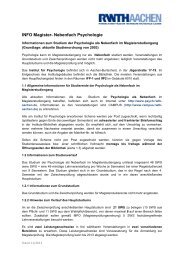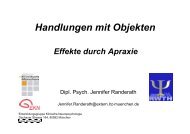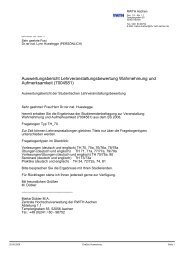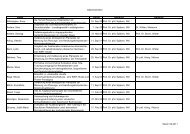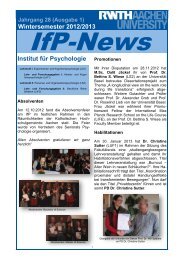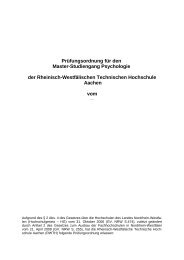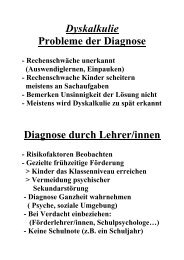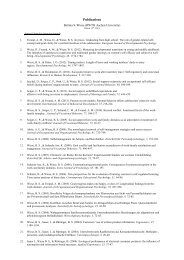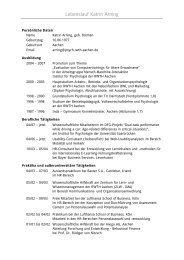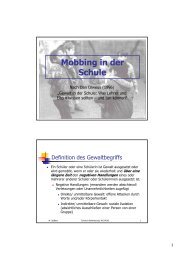Crossmodal Action 1 Crossmodal Action Selection - RWTH Aachen ...
Crossmodal Action 1 Crossmodal Action Selection - RWTH Aachen ...
Crossmodal Action 1 Crossmodal Action Selection - RWTH Aachen ...
You also want an ePaper? Increase the reach of your titles
YUMPU automatically turns print PDFs into web optimized ePapers that Google loves.
<strong>Crossmodal</strong> <strong>Action</strong> 16<br />
selection for the first response due to uncertainty which mapping rule to apply (see Duncan,<br />
1979; Proctor & Vu, 2009).<br />
Finally, it appears quite likely that the substantial assimilation of single-task<br />
processing speed (of 79%) in the condition with larger temporal task overlap should result in<br />
an overlap of response selection stages in at least a portion of dual-task trials, even when one<br />
assumes that the duration of response selection in the present paradigm is comparatively<br />
short. Thus, the effectiveness of the present manipulation renders a latent bottleneck account<br />
of the present data unlikely.<br />
Competition for entering the bottleneck?<br />
One could further object that even despite the substantial difference in single-task<br />
processing speed in the small temporal task overlap group, the common perceptual processing<br />
stage for both tasks could still lead to an equal probability for both tasks to first enter the<br />
central response selection bottleneck stage. This would imply that in some trials response<br />
selection is carried out for the manual task first, explaining dual-task costs for the saccades.<br />
Figure 2 presents a simplified conceptualization of a bottleneck model in which both<br />
tasks compete for entering the bottleneck stage. Based on the single-task RT differences<br />
between compatible saccades and compatible manual responses, the manual response<br />
execution stage generally equals two units instead of only one. The upper part of the figure<br />
depicts performance under small temporal task overlap, whereas the lower part depicts<br />
performance under larger temporal task overlap. The right column depicts mean overall costs<br />
(in units) predicted by the model, assuming equal (50%) entry probabilities for both central<br />
bottleneck response selection stages. These assumptions imply that in the small temporal task<br />
overlap group mean dual-task costs should be greater for saccades than for manual responses,<br />
since in half of the trials the saccade task has to wait until the relatively long manual response<br />
selection stage is completed. However, this prediction is clearly incompatible with the present<br />
data.



